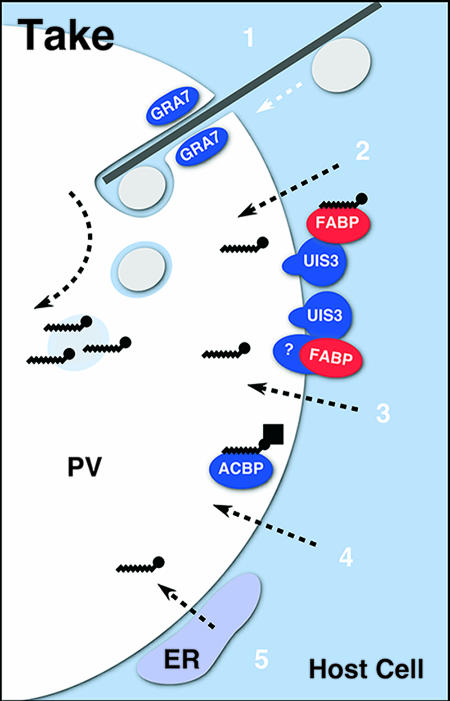FIG. 2.
Apicomplexan fatty acid and lipid uptake mechanisms. Host cell cytoplasm is shown in blue, the PV in white. Parasite proteins are shown in blue, host cell proteins in red. (1) Toxoplasma has recently been shown to trap endosomal/lysosomal vesicles (gray ovals) in the PV, and host cell microtubules and the parasite protein GRA7 have been implicated in this process. These vesicles could be a source not only of sterols but also of other lipids as sources of fatty acids. (2 and 3) The Plasmodium liver schizont targets a protein to the PV membrane (UIS3) that binds host cell fatty acid binding protein (FABP). This might aid fatty acid uptake by simple diffusion (through the PV membrane or PV pores) or involve additional parasite-derived transporters (labeled “?”). (4) Cryptosporidium secretes an acyl-CoA binding protein (ACBP) into the PV. (5) The PV recruits the host cell endoplasmic reticulum (ER) and mitochondria (not shown) to its membrane, which might facilitate the salvage of fatty acids and other lipids. Note that direct biochemical evidence for a role in fatty acid uptake of these mechanisms is still largely missing; no information is available on how lipids cross the parasite's plasma membrane.

